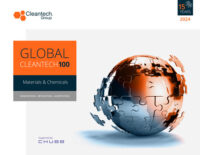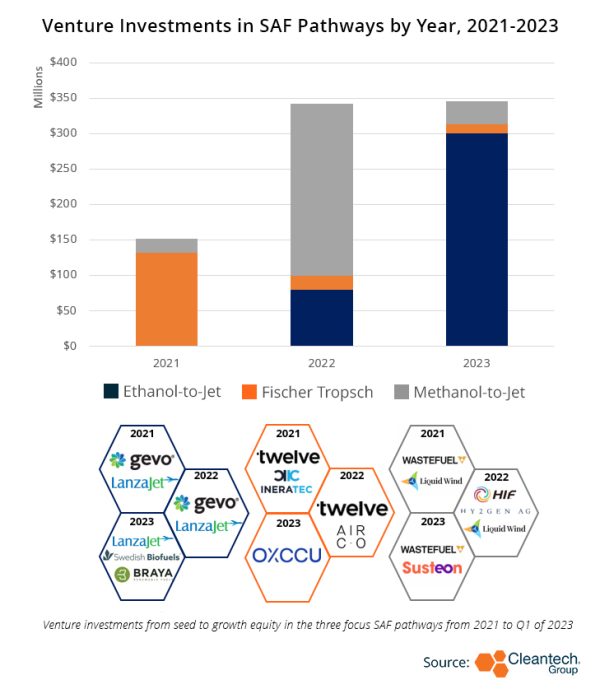Sustainable Aviation Fuels: The Rise of eJet
Aviation accounts for approximately 3% of global carbon emissions and 12% of all transportation. With demand for aviation fuel growing at 2.3% over the last thirty years, carbon emissions will rise in tandem. However, recent commercialization of low carbon fuels and production techniques offer a pathway toward carbon neutral aviation.
A global policy movement to decarbonize aviation fuels has produced a new market for Sustainable Aviation Fuels (SAFs). Governments in Europe, North and South America, and the Middle East have created blending mandates for their aviation industries, creating a strong demand for these fuels. The resulting swell of innovation in this sector has come from across the business world and contributors range from international oil and gas merchants to small start-ups.
eJet Innovations
Electrofuels, specifically eJet, are fuels produced using captured carbon and renewable electricity to create automobile, aviation, and maritime fuels. Currently, production of eJet is extremely costly and requires specific innovation to reach commercial viability. Areas of innovation for eJet focus on:
- Expanded production of electrolyzers and Fischer-Tropsch reactors to drive down capital costs
- Determining optimal catalysts for conversion processes through experimentation with emerging options such as iron and plasma catalysts
- General openness to utilizing emerging innovations such as single-step conversion technology from companies like OXCCU and Air Company
Innovation in these three areas ties into a larger theme of production experimentation. eJet has several production pathways including Power-to-Liquids (PtL). As PtL is still in the early stages of commercial development, optimal production scale has not been finalized. Small start-ups are avoiding large plant construction due to high capital costs on equipment that could be suboptimal in a few years’ time.
In place of large plants, PtL start-ups are developing modular production plants to experiment with various facets of production while still producing fuels for sale. With this strategy, smaller companies can experiment in various markets simultaneously to find countries with optimal policy and infrastructure support.
Larger start-ups have developed bigger plants, but usually with at least one development partner. Importantly, smaller plants are suited to current renewable energy production limits. As access to power scales, the size of plants will grow in parallel.
eJet Innovator Spotlight
- Zero: The UK PtL producer has recently finalized their PlantZero.1 construction and are producing eJet. Zero worked with the United Kingdom Royal Air Force as an early development partner and has since expanded further in the defense space. Zero is now rolling out several production sites in their PlantZero.2 project.
- OXCCU: After finalizing a $23M Series A this month, the UK PtL producer is rapidly expanding production and looking to launch new facilities. OXCCU has innovated in several areas of eJet simultaneously including the use of iron catalysts, single step conversion, and commercializing production by-products.
- HIF: A methanol-to-jet producer, HIF recently announced partnerships with leading technology companies Johnson Matthey, Honeywell, and Siemens for their production facilities in Chile and Texas. The international eJet producer plans to rapidly expand in Europe, Latin America, and North America to fill global demand for SAF.
eJet Trends and Long-Term Outlook
Success in the SAF space is directly correlated to feedstock availability — for eJet, the two crucial components are renewable electricity and carbon dioxide. Start-ups have found success locating their plants in areas with existing renewable energy providers, eliminating the need for further capital expenses on constructing this infrastructure.
Similarly, start-ups like Ineratec actively pursue partnerships with factories or direct air capture providers to supply their carbon dioxide. This type of partnership is becoming more common with the emergence of commercial direct air capture.
Certain countries such as the U.S. and France provide large financial incentives to eJet producers or legislate blending mandates to spur demand. Current production of eJet reflects this as both countries are hotbeds of innovation and experimentation. Similarly, certain areas of the world are investing heavily in renewable electricity and attracting eJet producers. Continued public investment will be crucial to the development of this industry.
eJet is expanding rapidly as demand is spurred by concerned governments. That said, it will be crucial for companies to focus on developing their facilities at a rate correlated with access to carbon dioxide and renewable energy, not just market demand.




